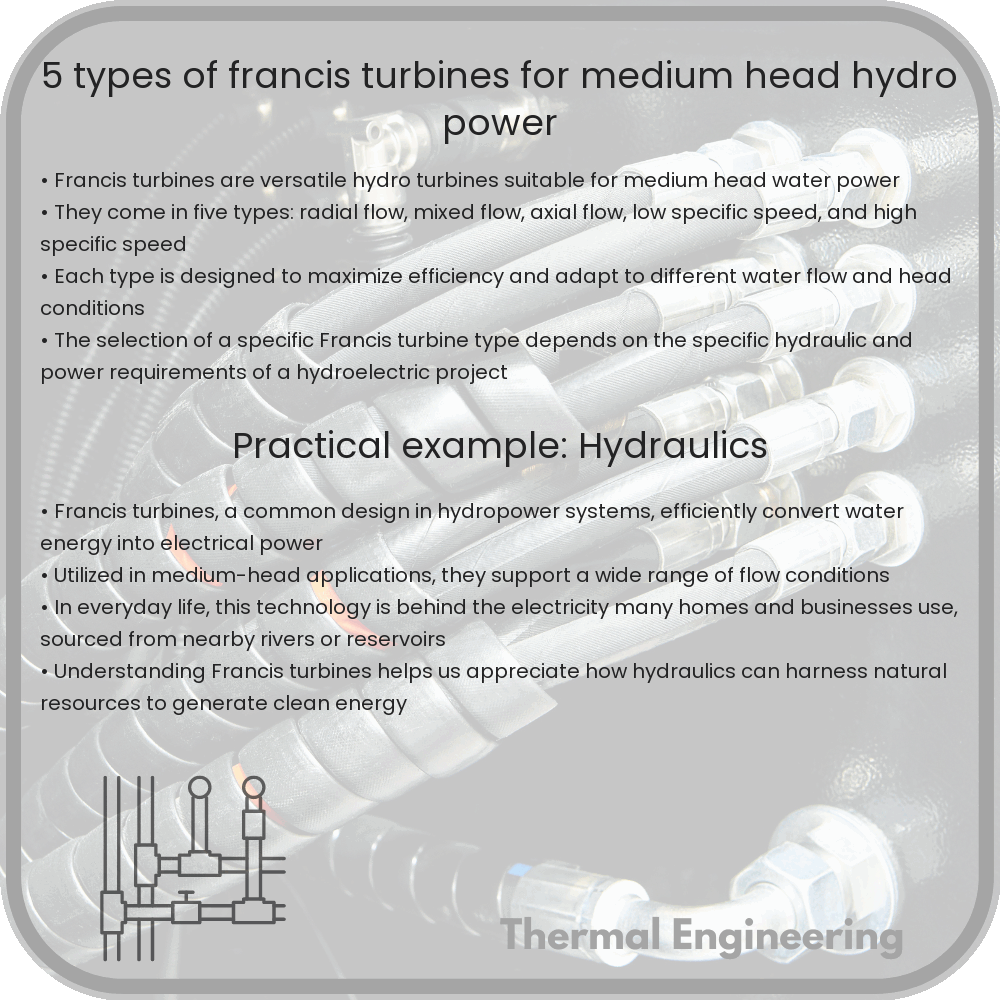Learn about the five types of Francis turbines designed for medium head hydro power, each optimized for specific site conditions and efficiency.

Understanding the Variations: 5 Types of Francis Turbines for Medium Head Hydro Power
The Francis turbine is a type of reaction turbine, commonly used in hydroelectric power plants that operate at water heads from 40 meters to 600 meters. Named after James B. Francis who developed it in the 1840s, this turbine is versatile and efficient. Particularly for medium heads—typically considered to range between 100 meters and 400 meters—there are several adaptations of the Francis turbine that enhance its performance and suitability. Here, we explore five distinct types of Francis turbines utilized for medium head hydroelectric projects.
1. Spiral Case Francis Turbine
The Spiral Case Francis Turbine characteristically features a spiral-shaped casing that uniformly distributes water to the turbine runner. This design minimizes energy losses as water transitions from the high pressure of the penstock to the lower pressure environment of the turbine blades. The spiral casing is particularly effective in medium head applications where managing water flow and minimizing turbulence is crucial for maintaining efficiency.
2. Compact Francis Turbine
Designed for installations that require a smaller footprint, the Compact Francis Turbine is ideal for medium head sites with limited space. This variant maintains the efficiency and performance characteristics of traditional Francis turbines but in a configuration that reduces the overall size and complexity of the civil construction needed, thereby reducing costs as well.
3. High Flow Francis Turbine
In scenarios where the available water flow rate is exceptionally high, the High Flow Francis Turbine comes into play. This type is engineered to handle larger volumes of water without suffering from cavitation—a common problem where vapor bubbles form in low pressure regions, potentially damaging the turbine. By optimizing the shape and pitch of the blades, this turbine manages high flow rates effectively at medium heads.
4. Variable Speed Francis Turbine
With advancements in technology, Variable Speed Francis Turbines have become feasible and are increasingly used in medium head plants. Unlike conventional fixed speed turbines, these turbines can adjust their operating speed to match fluctuating water flow conditions, thereby maximizing efficiency and output across varying operational demands. This capability makes them highly adaptable and efficient in regions with significant seasonal variation in water availability.
5. High Efficiency Francis Turbine
Engineered to maximize energy conversion, the High Efficiency Francis Turbine incorporates refined blade geometries and materials that reduce friction and hydraulic losses. Especially suitable for medium head installations, this turbine variant ensures that a greater percentage of water’s kinetic and potential energy is converted into mechanical energy, leading to higher electrical output for the same amount of water compared to standard models.
In conclusion, while all Francis turbines operate on the same basic principles, their adaptations make them suitable for specific conditions encountered in medium head hydroelectric projects. By choosing an appropriate type of Francis turbine, engineering professionals can optimize the balance between cost, efficiency, and performance, effectively harnessing the power of water to generate electricity.